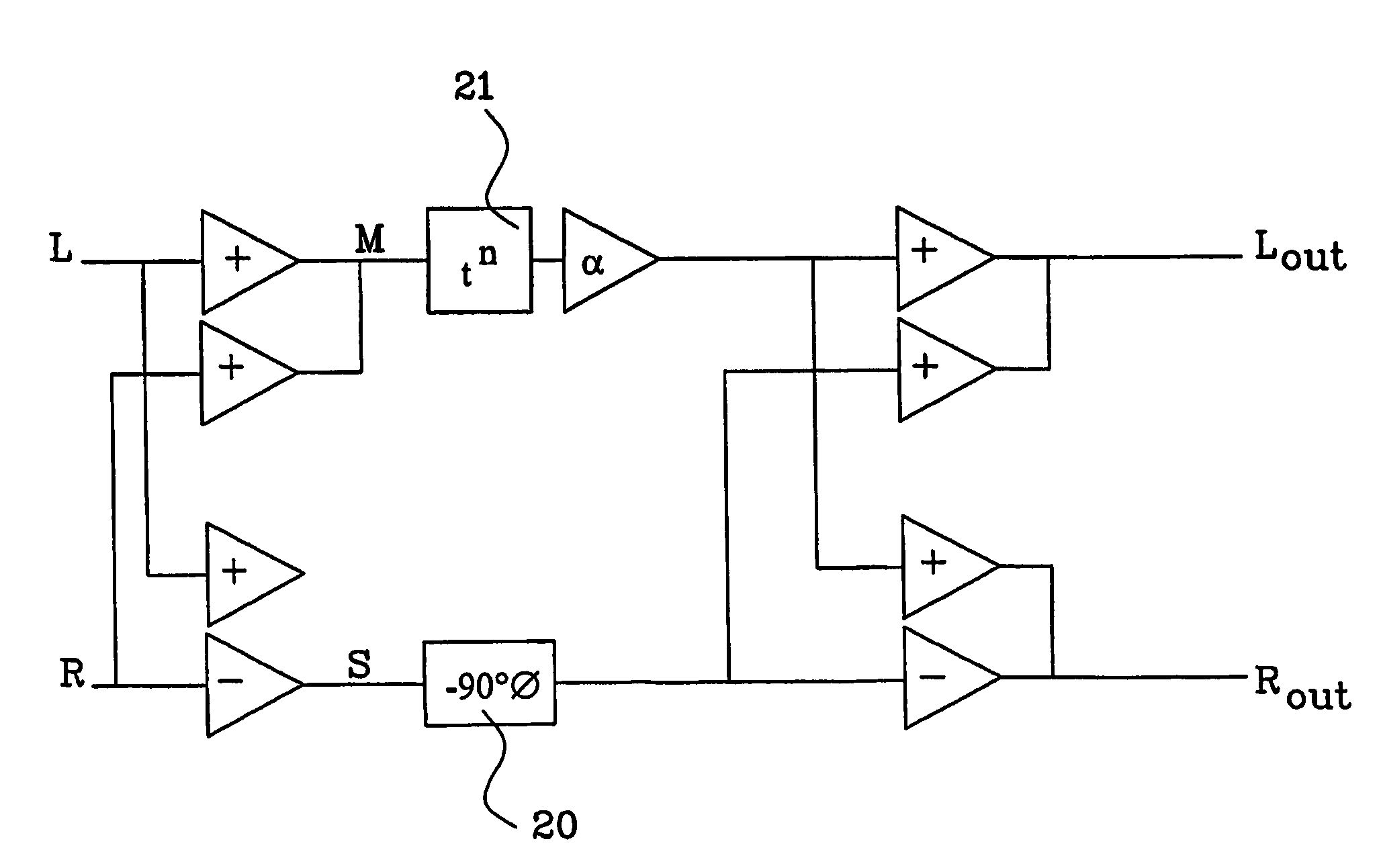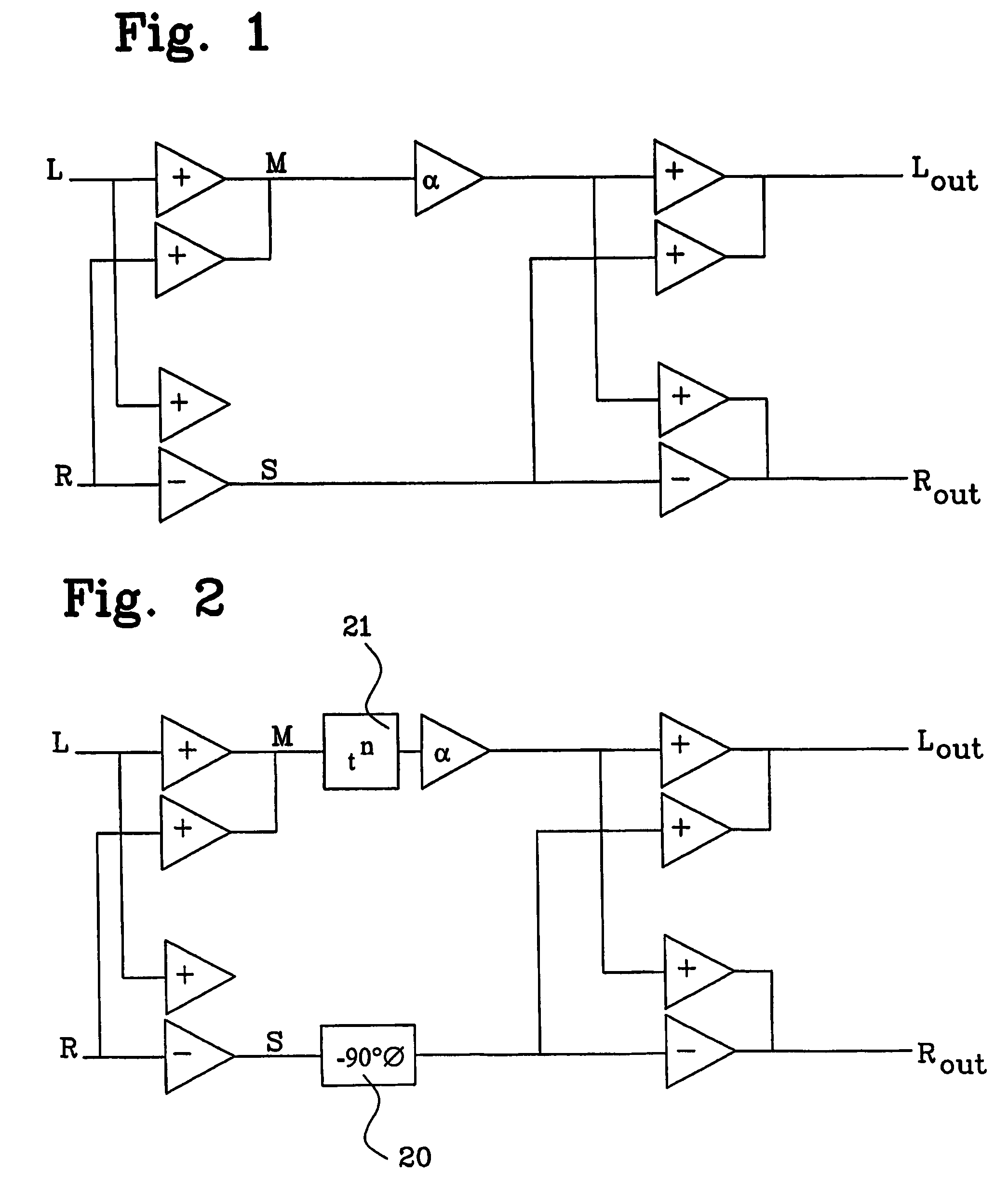Audio stereo processing method, device and system
a stereo signal and processing method technology, applied in the direction of stereophonic arrangments, frequency/directions obtaining arrangements, and spatial/constructional arrangements of loudspeakers, can solve the problems of degrading or completely vanishing and affecting the degree of stereo effect. fidelity, the effect of facilitating the obtaining of the desired phase relation
- Summary
- Abstract
- Description
- Claims
- Application Information
AI Technical Summary
Benefits of technology
Problems solved by technology
Method used
Image
Examples
Embodiment Construction
[0020]FIG. 1 illustrates the functional principle for a prior art device for processing an audio stereo signal. The input audio stereo signal comprises a left input stereo signal L and a right input stereo signal R. The L and R signals are used to obtain a mid signal M, and a side signal S, corresponding to the sum of the left L and right R input stereo signals, and the difference between the left L and right R input stereo signals, respectively. The output stereo signal LOUT, which is to be sent to a left sound reproducing unit, such as a loudspeaker, is the sum of the side signal, S, and the mid signal M multiplied by an attenuating factor α, while the output stereo signal ROUT, which is to be sent to a right sound reproducing unit is the sum of the inverted side signal, S, and the mid signal M multiplied by an attenuating factor α.
[0021]The system described in FIG. 1 allows an electrical audio stereo signal to be reproduced with a high degree of fidelity with high consistency in ...
PUM
 Login to View More
Login to View More Abstract
Description
Claims
Application Information
 Login to View More
Login to View More - R&D
- Intellectual Property
- Life Sciences
- Materials
- Tech Scout
- Unparalleled Data Quality
- Higher Quality Content
- 60% Fewer Hallucinations
Browse by: Latest US Patents, China's latest patents, Technical Efficacy Thesaurus, Application Domain, Technology Topic, Popular Technical Reports.
© 2025 PatSnap. All rights reserved.Legal|Privacy policy|Modern Slavery Act Transparency Statement|Sitemap|About US| Contact US: help@patsnap.com



